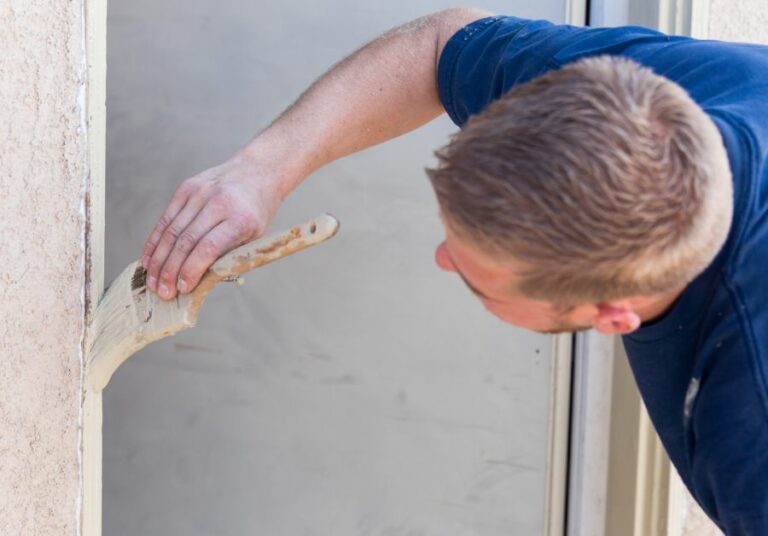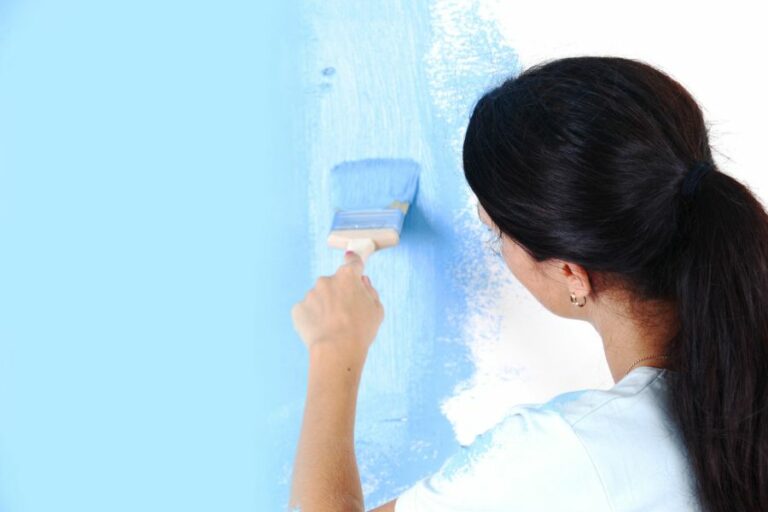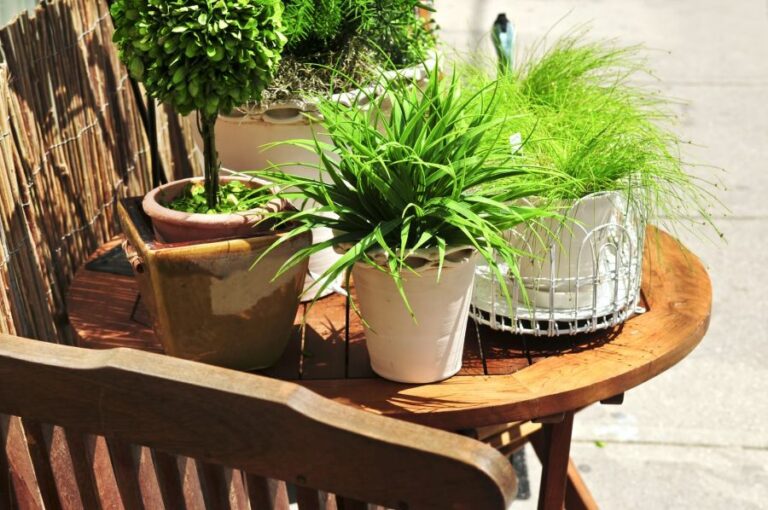Expert Tips for Choosing the Best Outdoor Wood Paint
Are you looking to breathe new life into your outdoor wooden structures? Our latest blog post, ‘Paint for Outdoor Wood,’ is the ultimate guide to help you choose the perfect paint to withstand the elements and bring out the natural beauty of your wooden surfaces. Discover the best options for your needs, from fences and decks to playsets and furniture.
Paint for outdoor wood:
Choosing the right exterior wood paint is crucial for durability, protection, and an attractive finish. Acrylic latex paint, a popular choice for outdoor wood, offers quick drying time, low VOC content, and flexibility. In contrast, oil-based paint provides a solid, durable finish with higher VOC content.
Exterior stains do not provide as much protection as paints but enhance the natural beauty of the wood. Consider surface type, climate, desired finish, and environmental impact when selecting paint, and ensure proper surface preparation, priming, and application techniques for a successful outdoor wood painting project.

Discover the various types of outdoor wood paint, each offering unique benefits and drawbacks. From water-based to oil-based, and even eco-friendly options, we’ll guide you through selecting the perfect paint to protect and beautify your outdoor wooden surfaces.
Contents
- 1 Exterior Wood Paint for Outdoor Surfaces
- 2 What is the Most Suitable Type of Paint for Outdoor Wooden Surfaces?
- 3 Is Priming Exterior Wood Necessary Before Applying Paint?
Exterior Wood Paint for Outdoor Surfaces
• Introduction
When painting outdoor wood surfaces, choosing the right type of paint that provides durability, protection, and an attractive finish is important. With various options available in the market, it may be confusing to determine which paint is most suitable for your requirements.
I will discuss the different types of paint available for outdoor wood, their pros and cons, and tips on choosing and applying the right paint.
• Types of Paint for Outdoor Wood
– Acrylic Latex Paint
One of the most popular types of paint for outdoor wood surfaces is acrylic latex paint. This type of paint is water-based and has several advantages, including:
- Quick drying time
- Low Volatile Organic Compounds (VOC) content, making it more environmentally friendly
- Flexible finish, which allows the paint to expand and contract with the wood as it’s exposed to changing temperatures and moisture levels
- Resistant to peeling and cracking
- Easy to clean with soap and water
For exterior wood, it’s recommended to choose acrylic latex paint specifically labeled for outdoor use. These paints contain additives that help resist fading, mold, and mildew growth, providing better adhesion to the wood surface.
– Oil-Based Paint
Oil-based paint was once the go-to option for exterior wood surfaces. However, it’s becoming less popular due to its relatively higher VOC content and environmental concerns. Some advantages of oil-based paint include the following:
- Solid, durable finish that can protect the wood against moisture and weather-related damage
- Excellent leveling, which results in a smoother finish
However, oil-based paints can take longer to dry and are more difficult to clean than acrylic latex paints.
– Exterior Stains
While not technically considered paint, exterior stains can also be used for outdoor wood surfaces. Stains are typically water- or oil-based and come in a range of transparency levels, from solid stains that provide an opaque finish to semi-transparent stains that allow the wood grain to show through.
Stains do not generally provide as much protection as paints, but they can still enhance the natural beauty of the wood and provide some level of protection from moisture, UV damage, and mildew growth.
• How to Choose the Right Paint for Outdoor Wood
When deciding on the type of paint to use for your outdoor wood surface, consider the following factors:
- Surface Type: Are you painting a deck, fence, siding, or other wood surfaces? Each surface type may require a different paint or stain for the best results.
- Climate: The local weather conditions can significantly impact the performance of outdoor paint. For example, high-humidity areas may require a paint more resistant to mold and mildew growth. At the same time, extreme temperature fluctuations can affect the durability and flexibility of the paint.
- Desired Finish: Consider the desired appearance of your finished wood surface. A stain might be better if you prefer to showcase the natural wood grain. However, choose an appropriate paint if a solid color or more durable finish is desired.
- Environmental Impact: When selecting paint, consider the product’s environmental impact, including its VOC content and disposal requirements.
• Tips for Applying Paint on Outdoor Wood
For a successful outdoor wood painting project, keep these tips in mind:
- Proper Surface Preparation: Clean and sand the wood surface to remove dirt, stains, and old or peeling paint. This ensures better adhesion of the new paint and a smoother finish.
- Priming: Apply a quality primer before painting to seal the wood, improve adhesion, and enhance the durability of the finish.
- Quality Brushes and Rollers: Invest in high-quality brushes and rollers to ensure a smooth, even application.
- Choose the Right Weather Conditions: For best results, apply paint when the weather is dry, and the temperature is between 50F and 90F.
- Follow Manufacturer Instructions: Consult the paint product label for guidance on the correct application method, drying times, and other important information.
• Recommendations for Top-Rated Outdoor Wood Paints
Based on my experience, here are some top-rated outdoor wood paints to consider:
- Valspar Duramax: A high-quality acrylic latex paint with excellent weather resistance, UV protection, and flexibility. This paint is available in a wide range of colors.
- Sherwin-Williams SuperPaint: Another top-rated acrylic latex paint with good durability and mildew resistance. Suitable for wood siding, trim, and doors.
- Behr Premium Solid Color Waterproofing Wood Stain: A solid stain that provides the appearance of paint while still allowing the wood grain to show through. This water-based stain is durable and offers UV protection.
By carefully selecting the right type of paint for your outdoor wood project, you can protect your investment and enhance the aesthetics of your property. Follow the tips in this guide to ensure a successful painting experience and a long-lasting, beautiful finish.
What is the Most Suitable Type of Paint for Outdoor Wooden Surfaces?
Painting outdoor wood is a great way to protect it from the elements and give it a fresh look. However, not all paints are suitable for outdoor wood surfaces, and choosing the right one can significantly affect durability and appearance. I will discuss some of the best paint options for outdoor wood.
• Top Options for Outdoor Wood Paint
When choosing a paint for your outdoor wood project, there are a few key factors to consider, such as the type of wood, the desired finish, and the level of protection needed. Some popular paint options and their potential benefits for outdoor wood projects are here.
– Acrylic Paints
Acrylic paints are a versatile option for many outdoor wood surfaces. They are water-based, which means they clean up easily with soap and water and are generally easier to work with than oil-based paints. Acrylic paints are known for their excellent adhesion, which means they stick well to new and previously painted surfaces.
Moreover, acrylic paints tend to have superior resistance to cracking and peeling, which is essential when dealing with the natural expansion and contraction of the wood due to weather changes. They are also less likely to fade, maintaining their color well over time.
I recommend using high-quality acrylic paint with added UV inhibitors and fungicides to protect the wood from sun damage and mold growth. These additives are especially important for outdoor wood surfaces that receive a lot of sunlight or are in areas prone to dampness.
– Oil-Based Paints
Oil-based paints have been a traditional choice for outdoor wood due to their durability and excellent finish. Although they take longer to dry than acrylic paints, oil-based paints typically offer better penetration into the wood fibers, further protecting the wood from the elements.
Another advantage of oil-based paints is their ability to resist the influence of moisture, making them a fitting choice for exterior wood surfaces exposed to high humidity or frequent rain.
When selecting an oil-based paint for outdoor wood, look for a product labeled as a “marine” or “spar” paint. These paints are designed specifically for exterior applications and are known for their long-lasting durability and protection against the elements.
– Deck and Patio Paints
Deck and patio paints are designed for outdoor wood surfaces like decks, patios, and fences. These paints are usually acrylic-based and offer the benefits of both acrylic and oil-based paints, combining the ease of use and clean-up of acrylics with the penetrative properties and durability of oil-based paints.
I recommend using high-quality deck and patio paint with added UV protection and mildewcide to ensure the paint remains vibrant and resistant to mold growth for years.
• Additional Factors to Consider
– Primer
Applying a primer before painting outdoor wood is essential to improve adhesion and ensure a uniform appearance. When using acrylic paint, opt for an acrylic or latex primer. For oil-based paints, choose an oil-based primer. In both cases, look for a primer designed for exterior wood surfaces.
– Paint Finish
The finish of your outdoor wood paint can affect not only its appearance but also its durability. There are three main types of finishes: matte, satin, and gloss. Matte finishes do not reflect much light and are ideal for hiding imperfections, but they may not offer the same level of protection as glossier finishes.
Satin finishes balance appearance and durability, giving a soft sheen while offering excellent protection. Gloss finishes provide the most durable surface and are easier to clean but are more likely to show imperfections on the wood.
– Maintenance and Future Repainting
Even the highest quality paint will eventually need retouching or repainting. Acrylic paints may be easier to retouch, as they can be applied directly over existing paint without sanding, while oil-based paints generally require some sanding before reapplication.
• Conclusion
In conclusion, choosing the right paint for outdoor wood involves considering the specific needs of your project and balancing factors such as ease of application, durability, and appearance. High-quality acrylic paints, oil-based paints, and deck and patio paints can all offer excellent results when used on outdoor wood surfaces.
By selecting a paint with added UV protection and mildew resistance, priming the surface properly, and choosing an appropriate finish, you will maximize the longevity and beauty of your outdoor wood project.
Type of Paint | Pros | Cons |
|---|---|---|
Acrylic Latex Paint | Water-based, easy to clean up, quick-drying, UV-resistant, good adhesion, flexible | Less protective than solid stains, requires periodic reapplication, may need an initial primer for new wood |
Oil-Based Paint | Durable, long-lasting, good for high-traffic areas and extreme weather conditions | Requires solvent clean-up, longer drying times, may be prone to cracking/peeling, not as environmentally friendly |
Semi-Transparent Stains | Provides more protection than semi-transparent stains, and opaque color can be matched to the home’s color scheme | Enhances natural wood grain, provides water and UV protection, is breathable, can be reapplied without stripping |
Solid Stains | Enhances natural wood grain, provides water and UV protection, is breathable, and can be reapplied without stripping | Hides natural wood grain, not as breathable, may require stripping before reapplication |
Is Priming Exterior Wood Necessary Before Applying Paint?
If you plan to paint the exterior wood on your home or other property, you might wonder whether it’s necessary to prime the surface first. Priming exterior wood is a crucial step in the painting process, as it not only enhances the paint’s durability but also preserves the integrity of the wood.
I will discuss the importance of priming exterior wood, tips for best practices, and recommended products.
• Why You Should Prime Exterior Wood
Priming exterior wood is essential for several reasons, including:
– Enhanced Paint Adhesion
Primer helps create an even and smooth surface for the paint to adhere to by filling any imperfections or rough spots on the wood. This results in a flawless and long-lasting finish.
– Improved Paint Performance
Priming also improves the performance of the paint that you apply over it. It reduces the absorption of the paint into the wood, allowing it to spread more evenly and with better coverage. This means you may require fewer coats of paint, saving time and money.
– Protection Against Rot and Decay
Exterior wood is constantly exposed to the elements, so protecting it against moisture, mildew, and rot is crucial. Primer acts as a barrier against these concerns, preserving the wood’s integrity and extending the paint job’s lifespan.
– Prevention of Stains and Resin Bleeding
Wood resins and naturally occurring tannins can sometimes bleed through the paint, resulting in unsightly stains. Priming the surface helps to block these stains, ensuring a clean and uniform appearance.
• When to Prime Exterior Wood
In general, it’s crucial to prime exterior wood before painting. However, there are some exceptions:
- If the wood is already painted and the current paint is in good condition, you might be able to skip the priming process. However, if there are any visible stains or streaks or the old paint is chipping or peeling, you should still prime the wood to ensure optimal results.
- When you use a paint-and-primer combination product, you will not typically need a separate primer. These combination products are designed to provide both the adhesion and protection properties offered by standalone primers, and they can save time and effort in the painting process.
• Choosing the Right Primer
Several types of primers are available on the market, and it’s essential to choose the right one for your project. Here are the most common types and their main benefits:
– Oil-Based Primers
Oil-based primers are ideal for exterior wood surfaces, providing excellent adhesion, stain blocking, and resistance to the elements. They are particularly well-suited for use on bare wood, as they penetrate deep into the wood fibers to create a strong bond.
– Acrylic Latex Primers
Acrylic latex primers are water-based and offer the benefit of easy clean-up and less odor compared to oil-based primers. They are suitable for exterior wood surfaces and have good adhesion and durability.
– Shellac-Based Primers
Shellac-based primers offer the best stain- and odor-blocking properties, making them an excellent choice for sealing the wood with knots or heavy tannins. However, they are more difficult to work with and require denatured alcohol for cleanup.
I recommend using a high-quality oil-based primer for most exterior wood projects, as it provides the best overall protection and performance for the painted surface.
• How to Prime Exterior Wood
Here are essential steps you should follow when priming exterior wood:
- Clean the surface: Start by removing dirt, dust, mildew, and loose paint from the wood surface. You can accomplish this using a combination of sandpaper, a scraper, and a soft brush.
- Repair any damage: Fill any cracks, holes, or imperfections in the wood with a suitable wood filler, and sand smooth when dry.
- Apply primer: Stir the primer thoroughly and apply it to the wood using a brush, roller, or paint sprayer, depending on the project size. Be sure to follow the primer’s instructions for application and drying times.
- Lightly sand: Once the primer is dry, sand the surface gently with fine-grit sandpaper to ensure a smooth finish and proper paint adhesion.
- Apply paint: After preparing the primed surface, proceed with your chosen exterior paint, following the paint’s instructions for application and drying times.
• Conclusion
Priming exterior wood before painting is a vital step that significantly impacts the appearance and durability of the completed paint job. Taking the time to prime the wood correctly will provide long-lasting protection and enhance the overall quality of the finished project.
So the answer to “Do you need to prime exterior wood before painting?” is a resounding “Yes,” with only a few exceptions. Remember to choose a high-quality primer and follow the proper preparation and application steps for the best results.
| Do you need to prime the exterior wood before painting? | |
|---|---|
| Answer | Yes, it is essential to prime exterior wood before painting to ensure better adhesion of paint, protection against moisture, and a smoother finish. |







